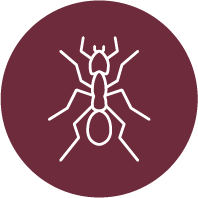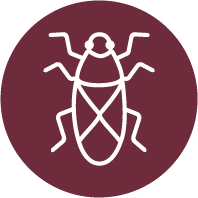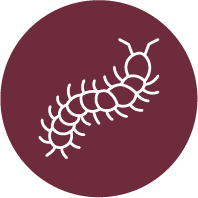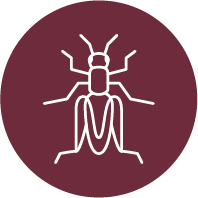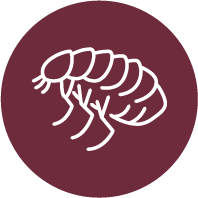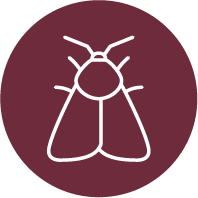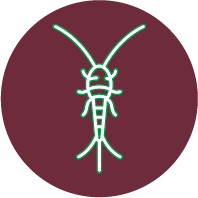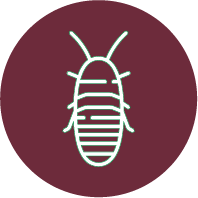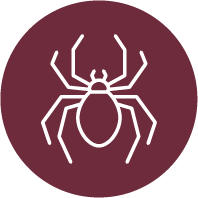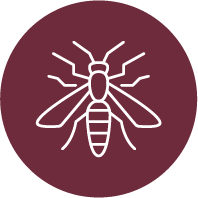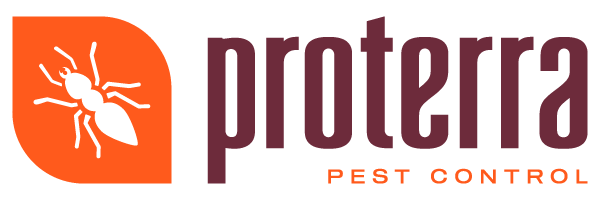Top 5 Ant Species in Your Tri-Cities Home
The Tri-Cities region—comprising Kennewick, Pasco, and Richland—is a thriving community known for its warm, semi-arid climate that also makes it an appealing habitat for ants. While these tiny insects are essential to the local ecosystem—helping with soil aeration and decomposition—they can become unwelcome guests once they find their way indoors. We will explore five common ant species frequently spotted in Tri-Cities homes, explain their habits, and provide environmentally friendly methods to help you manage and prevent infestations.
Odorous House Ants
Odorous house ants (Tapinoma sessile) rank among the most frequent household invaders in the Tri-Cities. They earn their name from the distinctive, somewhat unpleasant odor they emit when crushed. These ants are small and dark brown to black. They move quickly in search of sweets, greases, and other foods.
Odorous house ants often set up their colonies in wall voids or beneath floors. Because they breed quickly, a minor incursion can broaden into a major infestation. Eco-friendly management usually involves denying access to food sources by keeping counters free of crumbs and prompt cleanup of spills. Sealing small cracks with silicone-based caulk along windowsills, doors, and baseboards can also discourage entry. Non-toxic bait traps—especially those containing boric acid—are a common method for controlling these ants
without introducing harsh chemicals into your home.
Carpenter Ants
Carpenter ants (Camponotus spp.) are notably larger than other species found in homes, measuring between one-quarter and one-half of an inch. Their coloration varies from black to reddish brown, and they’re notorious for tunneling through wood to build nests—not to eat it. Moist or water-damaged wooden structures provide ideal environments for them, so any neglected leak or damp area within the house could be a potential nesting site.
To manage carpenter ants in an eco-friendly way, begin with locating and repairing any water damage. Proper ventilation in attics and crawl spaces also curbs moisture buildup, making these spaces less attractive for nesting. Natural baits containing boric acid can be left along pathways to internal nests; however, it is always crucial to monitor and replace these baits regularly. Professional guidance may be essential if the infestation is significant, as their tunneling can compromise structural elements over time.
Argentine Ants
Argentine ants (Linepithema humile) are another species that thrives in the Tri-Cities region. Originally from South America, they have spread widely and are known for forming supercolonies extending over large areas. In residential settings, Argentine ants usually assemble near water sources—such as kitchen sinks or bathrooms—making them exceptionally common in homes where moisture or spilled liquids are present.
Eco-friendly management for Argentine ants hinges on controlling moisture and food availability while also addressing their extensive colony structure. Start by fixing water leaks and storing food properly in airtight containers. Because these ants frequently trail in search of food, wiping surfaces with a solution of vinegar and water disrupts their pheromone trails. Natural repellents such as citrus oil can be dabbed around entry points to make these areas less attractive to invading ants.
Pavement Ants
Smaller and often found building tiny mounds of soil in cracks on sidewalks, driveways, and patios, pavement ants (Tetramorium caespitum) can also become a nuisance in kitchens and pantries. They feed on a variety of human foods including sweet or greasy scraps. Although pavement ants are not aggressive by nature, they can defend their territory against rival ant colonies, especially during warmer months.
The most effective approach to controlling pavement ants without harmful chemicals involves eliminating entry points and maintaining hygienic surfaces. Regularly vacuuming floors and rugs helps remove crumbs. Caulking foundation cracks and outdoor walls prevents ants from wandering indoors. Meanwhile, employing natural baits with reduced-toxicity active ingredients can systematically reduce their total colony population.
Pharaoh Ants
Pharaoh ants (Monomorium pharaonis) are one of the smallest house-invading ant species—measuring just one-sixteenth of an inch—and are usually yellowish or light brown in color. Despite their size, they construct extensive and resilient colonies, often nesting within wall voids, behind baseboards, or under appliances. Pharaoh ants can be a particular concern for healthcare facilities, but they also thrive in residential environments.
For eco-friendly pharaoh ant control, strategic baiting is key. These ants often fragment their colonies when threatened by harmful chemicals or severe disruptions, making gentle, bait-based control most effective. Placing compostable or plastic-lidded bait stations in discreet locations—such as behind the refrigerator—can attract worker ants and wipe out scope for new colonies. Proper sanitation, timely disposal of trash, and reducing humidity in the home—such as through dehumidifiers—help long-term control.
Prevention and Eco-Friendly Management Tips
Rather than relying on harsh chemicals, homeowners in the Tri-Cities can reduce or completely avoid ant infestations by integrating a few proactive, eco-focused measures:
- Seal all potential entry points around plumbing lines, cables, doors, and windows. Even the tiniest crevice offers an open invitation to ants.
- Repair leaky pipes or roof leaks right away, minimizing access to water sources. This also discourages wood-damaging ants from settling in.
- Store food—particularly sweet and greasy items—in airtight containers and keep counters, floors, and pantries clean.
- Use natural ant repellents like citrus oils or dish soap around doors and windows to disrupt chemical trails.
- Regularly inspect potted plants or garden beds adjacent to the house, as ant colonies often build nests nearby.
For those seeking professional assistance, eco-friendly pest control services can offer a comprehensive approach that doesn’t rely on chemicals harmful to local wildlife or your family’s well-being. Learn more about eco-conscious pest procedures by visiting our Proterra Pest Control website.
Expert Advice for Pest Control Planning
Every home in the Tri-Cities is unique, and so is every ant colony. While do-it-yourself measures can be effective initially, large infestations often require a deeper level of expertise. A pest control plan tailored to your home’s specific needs ensures that strategy and prevention go hand in hand. If you feel a professional assessment is right for you, consider scheduling a consultation so we can help customize an approach that remains mindful of the environment.
Eco-friendly solutions have proven successful in countless homes, offering peace of mind that you’re safeguarding your living space without compromising the local ecosystem. In the Tri-Cities’ warm conditions and unique environment, a proactive and environmentally conscious strategy is often the best line of defense for keeping ants at bay. By identifying the species in question and employing targeted, low-impact techniques, you can protect your home while contributing to a healthier community for everyone.
